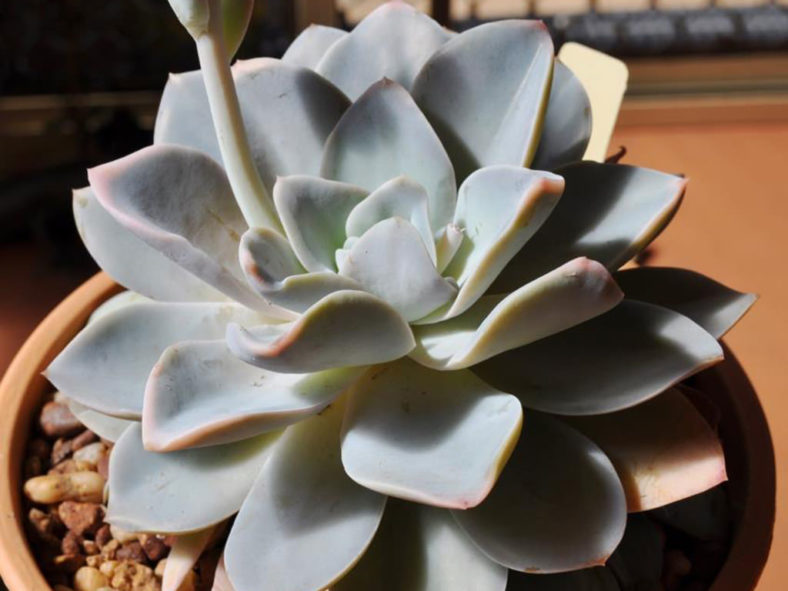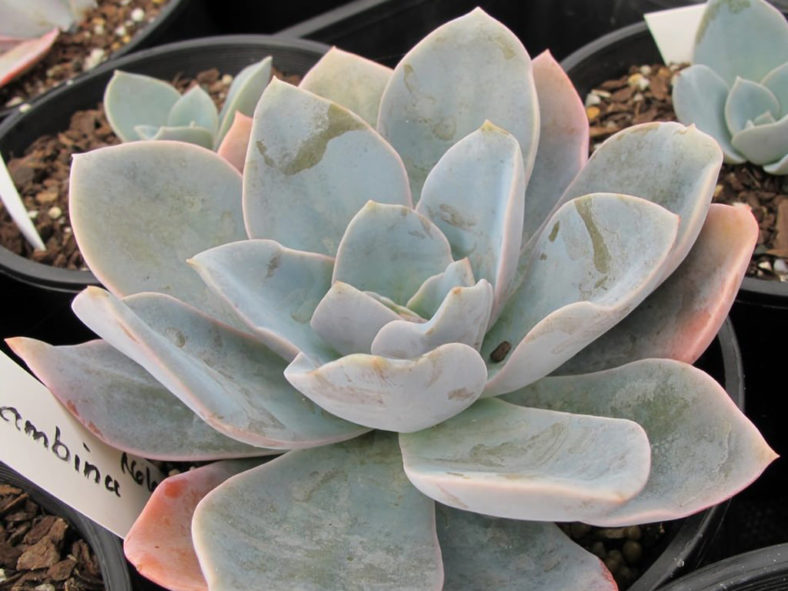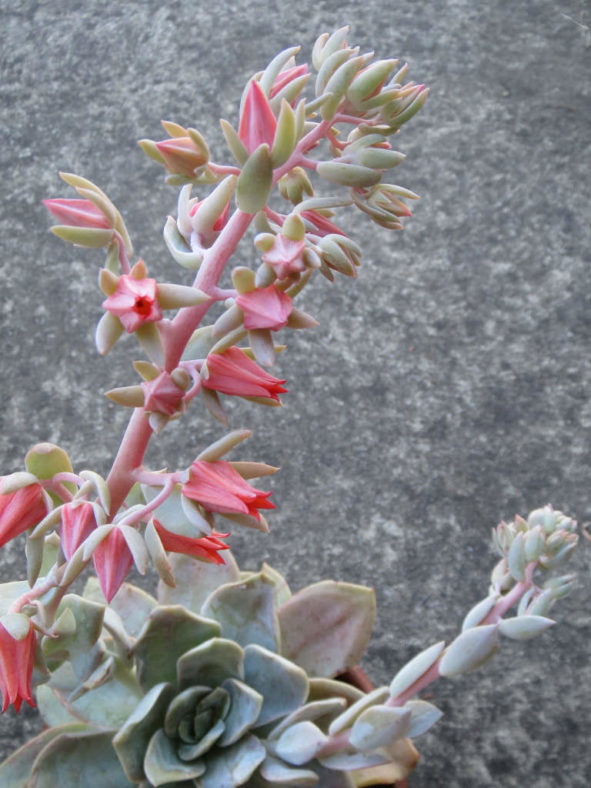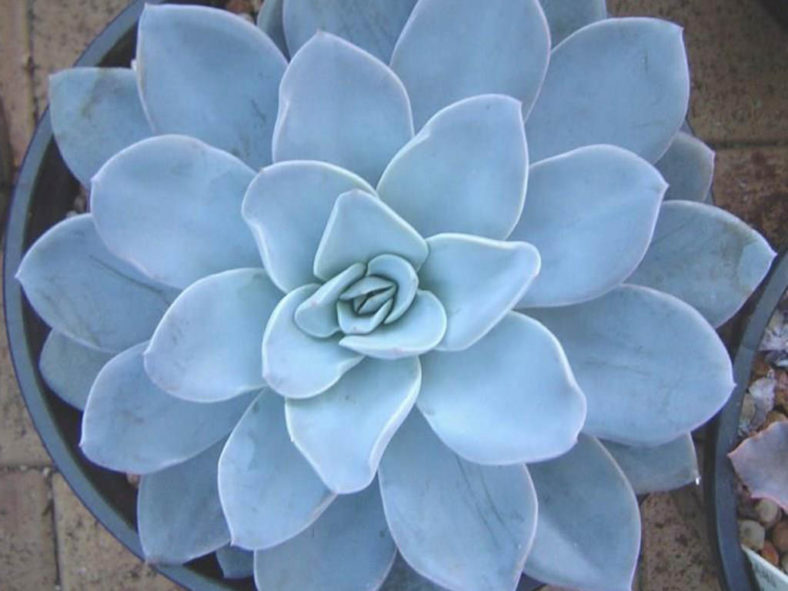Scientific Name
Echeveria 'Bambino'
Scientific Classification
Family: Crassulaceae
Subfamily: Sempervivoideae
Tribe: Sedeae
Genus: Echeveria
Origin
Echeveria 'Bambino' is a hybrid by Joyce Mueller from New South Wales, Australia. A seedling was found under an Echeveria 'Mexican Giant', but whether it was one of the parents is unknown. In any case, the inflorescence clearly shows the influence of Echeveria laui.
Description
Echeveria 'Bambino' is a succulent plant that forms large rosettes of pink-tinged, gray-green to blue-gray leaves with a powdery coating. The rosettes usually grow solitary or produce few offsets with age and can reach up to 8 inches (20 cm) in diameter.
The flowers are bell-shaped, reddish-pink, and appear on stalks that can grow up to 16 inches (40 cm) long, usually in summer.

How to Grow and Care for Echeveria 'Bambino'
Light: E. 'Bambino' prefers full sun to partial shade. If you move your plant outside in the spring, do it gradually. The intense afternoon sun can cause sunburn. During the winter, when your E. 'Bambino' is inside, put it near the brightest window in your home. It will stretch if it does not have enough sunlight.
Soil: This succulent needs a potting soil mix that drains quickly. Many growers will create their own mix. However, commercial succulent potting mixes will work fine.
Hardiness: This plant is a tender succulent, which means it must be brought indoors for the winter to survive. E. 'Bambino' can withstand temperatures as low as 25 to 50 °F (-3.9 to 10 °C), USDA hardiness zones 9b to 11b.
Watering: Provide moderate amounts of water from spring to fall. The "soak and dry" method is the preferred schedule for watering E. 'Bambino'. If you have saucers under the pots, empty the water briefly. During winter, water the plant just enough to keep the plants from shriveling.
Fertilizing: E. 'Bambino' grows well without fertilizer but may benefit from the extra nutrients. Use a slow-release fertilizer in spring or a liquid fertilizer diluted 2 to 4 times more than usual and used less often than recommended.
Repotting: Repot the plant only as needed during spring or early summer when it grows actively. To repot your E. 'Bambino', ensure the soil is dry before repotting.
Propagation: Like all Echeverias, this succulent is usually propagated from leaves and offsets, but it can also be grown from stem cuttings and seeds. Spring is the best time to take cuttings and separate offsets. Sow the seeds in spring or summer.
Learn more at How to Grow and Care for Echeveria.
Toxicity of Echeveria 'Bambino'
E. 'Bambino' is safe around pets and humans, although it is not advisable to eat it.
Links
- Back to genus Echeveria
- Succupedia: Browse succulents by Scientific Name, Common Name, Genus, Family, USDA Hardiness Zone, Origin, or cacti by Genus
Photo Gallery
Click on a photo to see a larger version.


